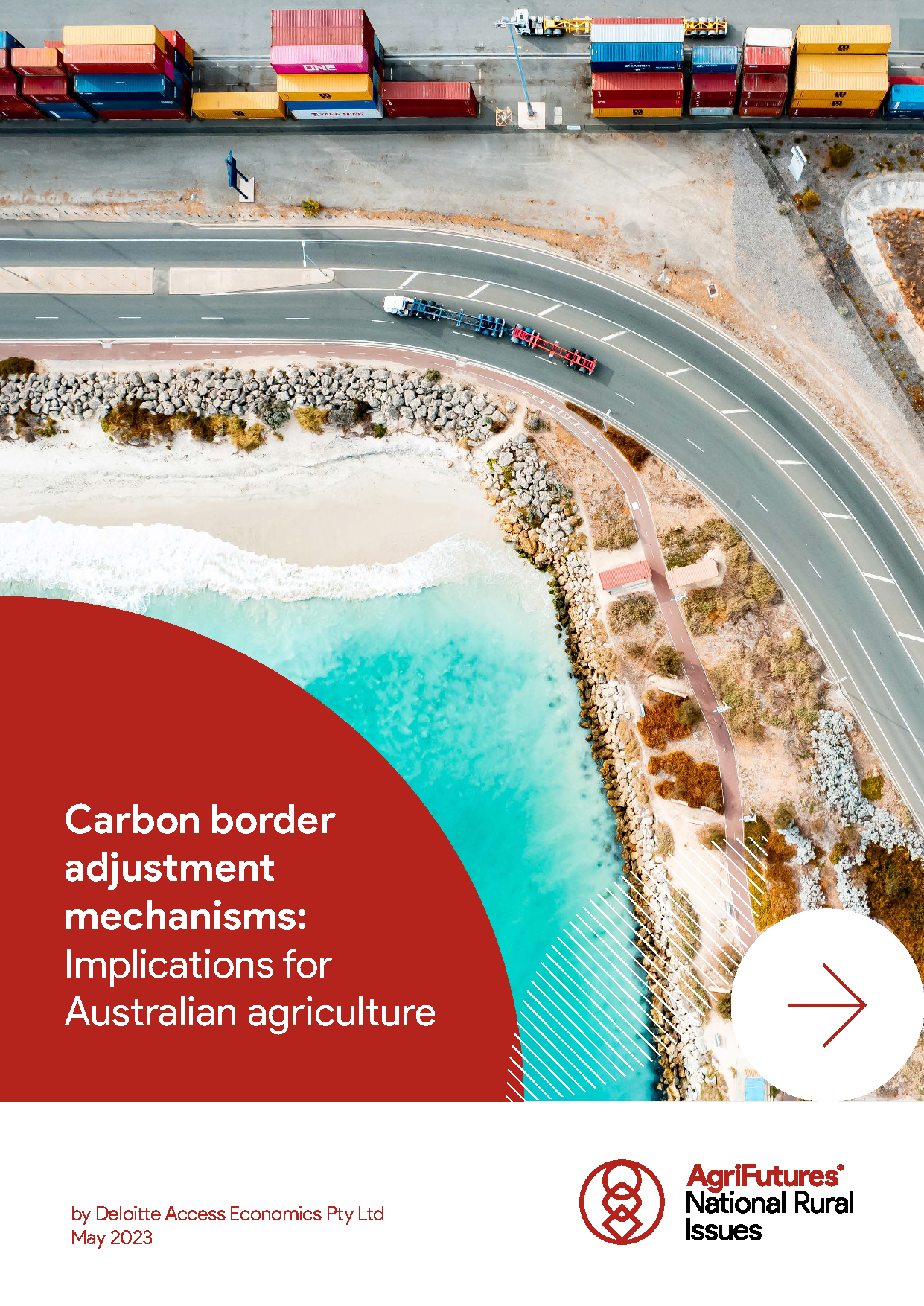Community Trust in Rural Industries: Year 4 national survey 2023
The Community Trust in Rural Industries project is a program of collaborative research to understand the nature of the relationship between Australia’s rural industries and...
 NATIONAL CHALLENGES AND OPPORTUNITIES
NATIONAL CHALLENGES AND OPPORTUNITIES 
50 pages
Published: 14 Nov 2023
Author(s): Deloitte Access Economics
ISBN: 978-1-76053-423-3
Download report PDF
DownloadPurchase a hard copy - AUD $50
The Paris Agreement on Climate Change, signed in December 2015, has motivated many countries, including some of Australian agriculture’s major trading partners, to implement various carbon taxes with the aim of meeting emissions targets. The implications of these taxes for Australian agriculture could be significant.
In 2022, Australia’s Labor Government committed to an ambitious target to reduce emissions by 43 per cent by 2030, and achieve net zero emissions by 2050. Additionally, Australia recently joined 122 others in signing the Global Methane Pledge. Neighbouring New Zealand has unveiled a plan to tax sheep and cattle burps in a bid to reduce emissions nationally.
Australian agriculture needs to understand the implications of this activity to inform future policy-making and to arm Australian producers with the tools and knowledge required to prepare for, and navigate, the complex carbon taxing environment.
As part of this project, Deloitte Access Economics undertook a global scan of carbon taxes being implemented globally, including the European Union’s (EU) Carbon Border Adjustment Mechanism (CBAM), and investigated what this means for Australian agriculture and what the economic impact might be. This report also provides an international comparison of the policies of seven jurisdictions – the EU, New Zealand, the United States, the United Kingdom, Canada, China and Brazil – and their potential impacts.
The analysis found in relation to products covered by the current EU CBAM, the cumulative impact on Australian agriculture is negligible: between 2026 and 2040, the impact is $34 million in present value terms relative to the baseline.
If agricultural products were to be included in the future, we would expect a cumulative reduction of $1 billion in output for Australia’s agriculture industry in present value terms relative to the baseline. On average, this is equivalent to a $71 million reduction in output annually relative to the baseline, with these losses concentrated in the initial years after the CBAM is introduced.
The immediate recommendations include monitoring and learning from the policy decisions of other jurisdictions, including the EU CBAM and the New Zealand emissions price on agriculture; periodically reviewing the risks of the EU CBAM; and investing in data standards and emissions accounting frameworks for the Australian agriculture industry.